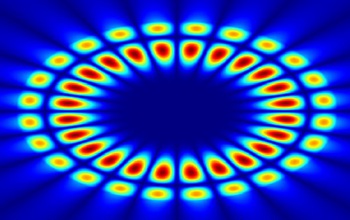Multimedia Gallery
Detecting trace amounts of contaminants or medical biomarkers sooner could safeguard against harm.
Researchers funded by the National Science Foundation are creating a new biosensor that uses laser light, engineered viruses and advanced manufacturing techniques to more accurately detect the smallest amounts possible of biological molecules--in our food, in our water and even in our own blood. Shown here is a cross-sectional view of a circular optical cavity or resonator showing whispering gallery modes total internally reflected along the surface of a fiber.
Credit: Joe Cheeney, University of California-Riverside
Images credited to the National Science Foundation, a federal agency, are in the public domain. The images were created by employees of the United States Government as part of their official duties or prepared by contractors as "works for hire" for NSF. You may freely use NSF-credited images and, at your discretion, credit NSF with a "Courtesy: National Science Foundation" notation.
Additional information about general usage can be found in Conditions.
Also Available:
Download the high-resolution JPG version of the image. (81.8 KB)
Use your mouse to right-click (Mac users may need to Ctrl-click) the link above and choose the option that will save the file or target to your computer.
Related story: Like cotton candy? You'll love electrospinning



